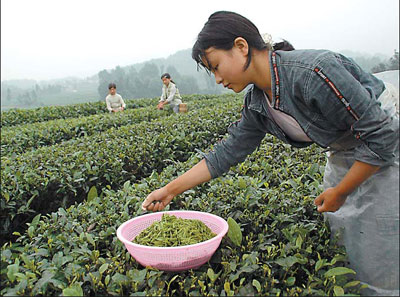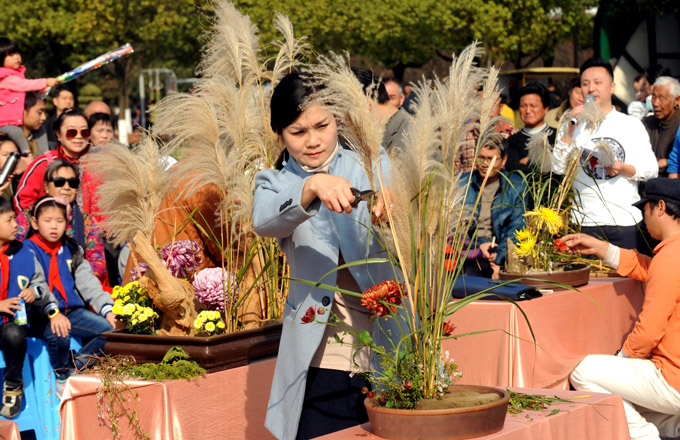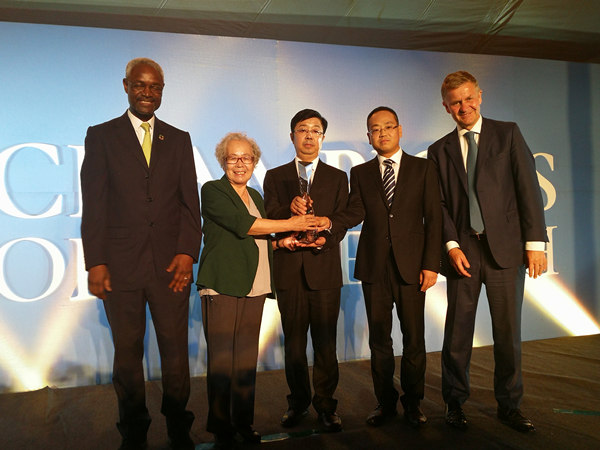

Under bright and warm sunshine, farmers at Kengxi village of Gaoqiao county, which belongs to Fuyang city of Zhejiang province, have been leisurely drying tea leaves as other workers are picking fresh tea leaves in the fields and on a hillside.
Tea-picking season has arrived, with its traditional labors but this year, Zhao Mingcan, head of the local tea association and a veteran tea farmer, wants to make a difference.
Zhao is drawing up a blueprint for Kengxi's tea industry. He is planning to build up a tea production base here, to unify tea picking and drying as well as setting up a new and unified brand in order to streamline the tea production and increase the income of farmers.

What gives Zhao the clout for his strategy is a policy that advocates the mergers of small villages in a bid to reduce the number of administrative villages and improve the efficiency of local governments.
Since 2007, mergers of small villages have been taking place in some of China's economically advanced provinces, such as Jiangsu, Zhejiang and Shandong in an effort to improve the local administrative structure and boost prosperity in China's rural areas.
In fact, Kengxi is a newly formed village - a combination of three villages, old Kengxi, Youling and Xialing. And Zhao is in charge of new Kengxi's daily affairs and expected to be formally elected as the head of the newly combined village in June.
The merger makes sense, as all the villagers neighbor one another and share similar customs and lifestyles, and more importantly, all were major tea producers in Gaoqiao county, Zhao says.
Youling and Xialing have a combined population of roughly 1,000, but their gross output value of industry and agriculture amounts to about 60 million yuan, compared to old Kengxi's 260 million yuan with a 495 population.
Old Kengxi's strength came from its relatively strong economy, production capability and as a convenient transportation locale, Zhao says. The merger has just combined their respective advantages, he adds.
Adjacent to Fuyang city, 611 small villages were restructured as 287 large villages in only 17 days last December.
According to statistics, there are 37,500 towns and counties in China, 645,000 villages with more than 1 million people working in the town or county governments and 4 million officers at the villages.
Zhang Lin, Party chief of Gaoqiao county, says the mergers of villages will largely improve the efficiency of resources and cut administrative expenses.
Taking another merger of villages in Gaoqiao county as an example, Zhang says the number of officers has been decreased from 40 to 9 after the combination of five small villages, as the cost of salaries and other fees has been cut from 400,000 yuan to 90,000 yuan.
For Kengxi village, a tea industry base, the individual power of the three villages was limited and uncompetitive without the combination, Zhang stresses. The merger was the only way to upgrade the tea industry in Kengxi.
Zhao is planning to adopt a standardized management model for tea production, drying, packaging and distribution. He also is focusing on the management of the environment, fertilization and spread of insecticide for organic production standards in order to get the QS (quality safety) certificate, a national permit for food and related products, to build up a well-known brand.
Zhang adds that the change in the local administrative structure can accelerate the construction of roads and power networks to people's living conditions.
Similar streamlining efforts in Shandong, Jiangsu and Zhejiang provinces have been successful, according to People's Daily.
However, there have been disputes during the mergers, mainly due to income differences and debt problems.
"The village which had more properties and higher incomes previously, will share a larger proportion of the income after the merger," says Zhang, "The debt will be taken by the newly-formed village."
The villages in debt should use their future income to make it up, Zhang adds. He says he hopes the combined villages will integrate and become a "real family" in five or 10 years.
It is helpful to carry out administrative mergers according to local conditions, says Dang Guoying of the Rural Development Institute under the Chinese Academy of Social Sciences.
While the development of rural transportation allows the villagers to enjoy greater public services, such as education and medical care, the appropriate layout and scale of the changes are essential, Dang stresses.
(China Daily 05/03/2008 page10)













